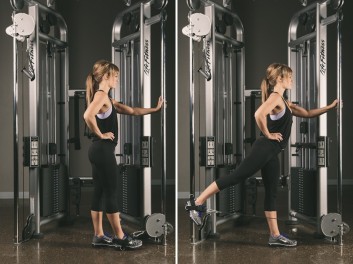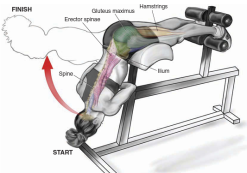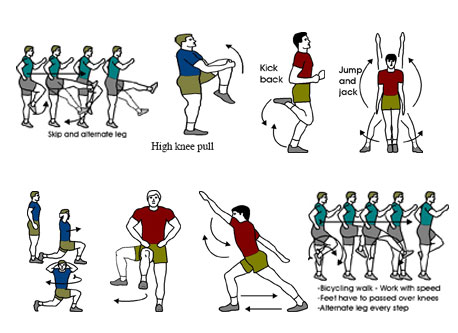INTRO
You may have read the title with confusion. You may have either thought I made a word up, or I felt like being cool by replacing an “F” with a “Ph”. Well, if you thought any of these things, you are correct. However, there is actually more to the word than that. I actually combined 3 different training styles into one word- power, hypertrophy, and full body. Can you tell me the absolutely unbreakable workout rule that says you can’t combine these into one workout? I’ll wait. While I’m not huge on extreme variation in training, I think an unconventional workout here and there can not only give the body a new stimuli, but can serve as a mental boost alike.
Power: The amount of work per unit of time. Basically, lifting with speed or velocity.
Hypertrophy: Lifting specifically for muscular growth.
Full-body: A workout in which you target every major body part.
WARM-UP
Cardiovascular machine- 5min-10min: I would suggest a bike on a moderate resistance, since peddling places a greater amount of focus on the quads/hamstrings. Do not go overboard, because you do not want to hinder your lifting performance.
Dynamic/mobility routine- 5-10 minutes: This routine should consist of multi-joint, large muscle group movements that favor/mimic that of the workout below. You should work on passive motions in the joints to a range of motion close to functional limits. Remember, this should be moderately intense, do not go overboard.
Light warm-up sets- 1-2 sets of 10-15 reps with very moderate weight. This will familiarize the movement, and bring blood to the lower body.
WORKING SETS
Barbell Back Squat: 5×3; 120s rest (power)
Set-up: This set up is just like a normal squat, but lighter. You want to aim for roughly 70% of the weight you would normally do for 3 reps. The idea is speed and explosiveness, not simply lifting the weight.
Execution: To perform this lift, I would suggest descending at a normal speed. Then, unlike normal squat speed, explode from the bottom-up. Form should be sound, as sloppy form and  speed are a dangerous combination. I would suggest practicing with weight much lighter than maximum.
speed are a dangerous combination. I would suggest practicing with weight much lighter than maximum.
Tips: A good rule of thumb for weight is to vibe how “explosive” you move. If you can shoot up so quick that the barbell nearly (or actually) leaves your shoulders, than the weight is too light. Contrarily, if you feel you are moving slowly, or “sticking”, than the weight is too heavy.
DB Front Squats: 3×15; super-set with hamstring curl (hypertrophy)
Set-up: You will need a set of dumbbells, and some adequate room. You will begin by curling the dumbbells up until they rest at your chest, with your fingers facing your body. I would suggest flaring elbows forward so that the dumbbells lean on your chest, and not force you to feel as if you’re curling them.
Execution: You should perform a squat with more of a vertical posture. This is done by

keeping chest as upright as possible, leaning over less, and allowing knees to move over feet more than usual (this won’t destroy them lol). Think of this technique more as a front squat, than a back squat.
Tips: You may feel the tendency of a forward pulling at first. This is caused by too much leaning, and not enough kneed flexion. Also, try overcompensating the weight into your heels, it may help until form is corrected.
Hamstring Curl: 3×15; 60s rest (hypertrophy)
Set-up: This is not angle specific. Feel free to use a lying, seated, leaning, or standing leg curl machine.
Execution: While keeping your toes pulled back, curl your leg until you hit a tight

contraction in the hamstring. Then, descend in a much slower/controlled fashion.
Tips: Some momentum is normal and expected, however, if you feel yourself unconsciously arching your back or swinging the weight, lighten the load. Basically, drop the ego, and lift to grow.
Bench Press: 5×3; 120s rest (power)
Set-up: You will need a barbell bench press, and a spotter. Much like the squat earlier, only add weight you can manage to move quickly.
Execution: Lower the bar in a normal motion until touching chest, then explode upward.

You should lockout to reset. Repeat.
Tips: Much like the squat earlier, the bar should move quickly, but not so much that you almost dislocate your shoulder.
DB Fly + Neutral Press: 3×12; 60s rest (hypertrophy)
Set-up: You will need a flat or incline bench. You will also need a set of dumbbells you can do 8 reps or so on chest fly with.
Execution:
Part 1: Begin the lift with a DB Chest fly. Fingers facing each other, and arms slig-

htly bent as if you were going to hug a wide tree. Descend in a controlled fashion, focusing on a deep stretch in the chest. Then, rise towards the mid-line, stopping just before lockout. Perform this for 6 reps.
Part 2: Without stopping, switch into a press of the same style ( fingers still facing each other). Perform 6 of these as well.

Tips: Basically do 6 of each, for a continuous total of 12.
Rack-pull From Knees: 5×3; 120s rest (power)
Set-up: You will need a squat rack, a barbell, and a cross bar (safety catch). You should set the height of the cross bar to just below or at your knees. You should use weight roughly 80% of your dead lift amount. Remember, explosive and speedy.
Execution: Begin by placing your shins/knees as closely to the bar as possible, and gripping it about shoulder width. Your lower back should be neutral, and your chest upright. Your chore should be tight and rigid. Place some tension on your straightened arms, and feet.

Then, using your hips, stand up straight; much like a dead lift. As you raise, the bar should remain as tight to the body as possible.
Tips: This is one of the most common “ego-lifts” there are. Don’t let it consume you, instead, lift what you can. Do not use a tap-and-go method- reset. Instead, the movements should be quick, and your form should be as perfect as possible.
DB Reverse Fly: 3×15- 60s rest (hypertrophy)
Set-up: You may do on fly machine, with dumbbells, or cable machine; each have their own feel and benefit. Just make sure your spine and head remain neutral, can cause nerve pinching if not.
Execution: As mentioned, keep back/ neck neutral. While keeping elbows almost, but not completely locked out, open arms out from side until a contraction of your upper back and shoulders stop the movement. The movement should be controlled, as this is a technique needed isolation lift, rather than a heavy weight type.

Tips: Mentally chase the burn while doing this movement, which will take practice. If hands are prone, the movement will target post deltoids and traps. If hands are neutral, the upper back will be targeted more; experiment with both.
DB lateral raise: 3×15; 60 rest (hypertrophy)
Set-up: You will need a pair of dumbbells, and an arms-length amount of room.
Execution: While keeping elbows slightly bent, and shoulders depressed (not shrugged), raise your arms out from the sides of your body. Your elbows should always be higher than

your hands.
Tips: If you feel you are shrugging, the weight is too heavy. If you uncontrollably bend your elbows, the weight is too heavy. If your hands rise before your elbow, the weight is too heavy.
Oh-F@!%s: 2×40 reps; 120s rest. (hypertrophy)
Set-up: You will need an EZ-bar, and a flat bench.I would suggest getting weight you can curl and/or do skull crushers for 20 reps with.
Execution (4 parts immediately in a row):
Part 1: Its a reverse grip (fingers facing forehead) skull crusher. I would suggest gripping the bar shoulder width, at a position is you can fully wrap your hand around. You should not reach failure, or struggle. – 10 reps
Part 2: It’s a normal E-Z bar curl. Stand up, and curl the bar with the exact same grip. You should not reach failure or struggle. – 10 reps
Part 3: A normal skull crusher (fingers facing away from forehead). While keeping elbows tight, perform a proper skull crusher. You may reach failure or just before at the last rep of this phase.– 10 reps
Part 4: It’s a reverse grip curl (palms down). You should curl in a reverse fashion. Make sure to keep wrists neutral, and elbows forward. – 10 reps

Tips: Keep the weight more modest than not. I would suggest a partner’s help. Buckle up for some burning. These should make you say “oh-f#$%” when you have to do them- hence the name.
This concludes the Phull-body workout. I would suggest taking a rest day following this workout.
STRETCH
The picture below has some recommend stretches to do following this workout. Both upper and lower should be performed.
Do each stretch for 2-3 sets of 10-20 second holds.


PRAY
God gave you another day, and another healthy workout.
Kyle Blair, BS Exercise Physiology, CPT
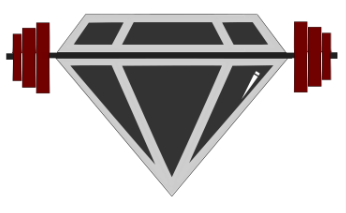



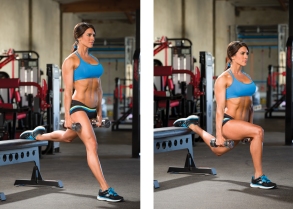


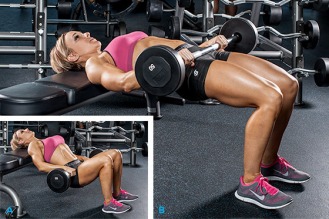

 either direction with one leg. Then, follow with the other leg. Repeat in the same direction until the reps are completed, and then reverse the direction in the same manner. You should maintain a constant depth for the entire duration.
either direction with one leg. Then, follow with the other leg. Repeat in the same direction until the reps are completed, and then reverse the direction in the same manner. You should maintain a constant depth for the entire duration.